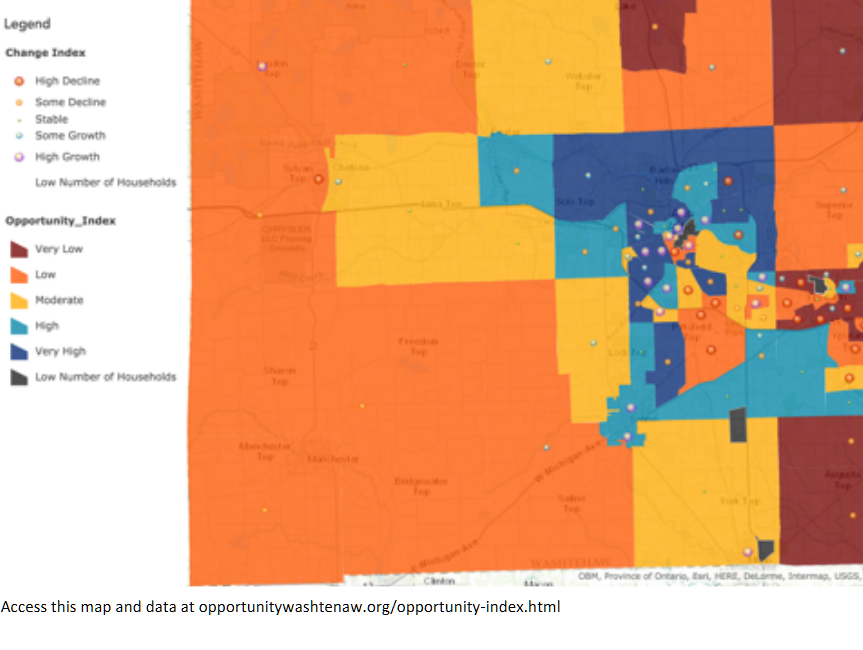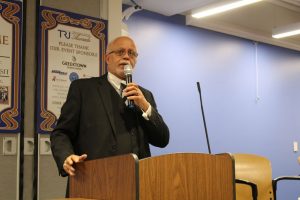With Southeast Michigan's RTA functionally destroyed because of Oakland and Macomb Counties' opposition, Wayne and Washtenaw have been seeking ways to pull something of value out of the wreckage.
One prominent Washtenaw County leader (who shall remain nameless) recently said, "It looks doubtful that the smallest county and the poorest county in the RTA can make anything worthwhile happen. And if Washtenaw tries to work with Wayne on this, we'd better watch our wallet." (Paraphrased)
How well this expressed two recurring themes that make Southeast Michigan the struggling region it has become. "We're poor! We're small! We can't trust our neighbors!"
Nonsense! Look around the world, and you'll see regions poorer and
(in some cases) smaller than we are, doing far more. Their communities pull together. They have a can-do
attitude. We have a can't-do attitude. This is not what made America
great, folks.
Brisbane, Australia
Indulge me in a comparative example:
Brisbane, Australia. Population about half that of
Southeast Michigan's. GDP, both absolute and per capita, also much lower:
 |
| Brisbane Central Business District, flanked by expressway and busway. |
| Quick Facts |
Detroit Metro |
Brisbane Metro |
| Population 2016 |
4,313,002 |
2,360,241 |
| Metro GDP |
$207.53 B |
$96.6 B |
| Per capita GDP |
$48,118 |
$40,928 |
| Poverty rate 2016 |
14.9% |
12.5% |
I spent just three days in Brisbane last year, and
was amazed at the quality and convenience of their transportation
offerings. For a quick overview, let me quote Wikipedia's "Transport in
Brisbane" introduction:
Transport in Brisbane, the
capital and largest city of Queensland, Australia, is provided by road,
rail, river and bay ferries, footpaths, bikepaths, sea and air.
Transport around Brisbane is managed by both the Brisbane City Council and the Government of Queensland.
Public
transport in Brisbane is co-ordinated by TransLink. Rail services are
operated by Queensland Rail, through its City network system. Bus
services are operated by both the Brisbane City Council's Brisbane
Transport subsidiary and private operators, and uses the road network as
well as dedicated bus lanes and busways. Ferry services on the Brisbane
River are operated by Transdev Brisbane Ferries. [Retrieved 2018-05-16]
These
diverse services have shared a smartcard payment system since 2007, so
nobody has to worry about exact change or whether their transfer is valid.
Seventeen transit operators provide bus service throughout Southeast
Queensland, with scheduling and payment coordinated by TransLink, which
is a department of Queensland's equivalent of
MDOT.
Roughly
sixty bus routes share 17 miles of busways, built since 1996.
 |
| Victoria Bridge into central Brisbane is exclusively for buses, bikes, and pedestrians. |
Brisbane's busways are not BRT lines, though they share some resemblance
to them. They are exclusive bus-only highways, 2 lanes wide in most
places, running through tunnels under the city much of the way, and
crossing two sizeable bus-only bridges over the Brisbane
River at different points. These busways connect north, east, and
southeast parts of the city, and carry about 20,000 passengers per hour
during morning and evening peaks.
 |
| Buses on the Northern Busway at Normanby Bus Station |
Also of note are the commuter
train lines - thirteen lines, including one to the airport, almost all
electrified. The system has 152 stations on 468 route-miles, and served
52.44 million passengers in 2015/16.
 |
| Commuter train entering Roma Street Station during evening rush |
Perhaps the most charming
public transportation in Brisbane is CityCat, the fleet of high-speed
catamaran water-buses plying the Brisbane river. (How about a rapid
ferry service from near Mt. Clemens to Detroit's RenCen and Cobo Hall?)
Brisbane
didn't achieve this by skimping on expressways: there are seven in and
around the city, including an underground tunnel expressway to ease
downtown congestion.
 |
| Bowen Hills area of Brisbane. Busway (left) and commuter rail maintenance facility (right) flank major expressway intersection.(Google satellite image ©2018) |
Theme 1: We're too small, too poor
 |
| The BTC (Brisbane Transit Center) Roma Street |
OK, so we must be poorer than Brisbane, right? Wrong, Brisbane is not a wealthier metropolis than Detroit. While Detroit was going through that painful bankruptcy, the metro area in 2014 was estimated by the Brookings Institution to have a Gross Domestic Product (GDP) of $207.53 billion. At the same time, Brisbane's was pegged at $96.6 billion by the same Institution - again, about half the size of Detroit's. Per capita, Detroit's GDP is $48,118, Brisbane's $40,928.
So: Brisbane has half the population, half the GDP, and 85% of the productivity per capita as Detroit...a comparable freeway system,
and incomparably better public transportation.
Why? Because they have a
can-do attitude, and they're
willing to work together as a region.
Prosperity is as much a state of mind as it is a a state of the economy. Brisbane
thinks it can do great things, so they make great things happen. (They also have incredible parks and trails in the middle of the city.)
 |
| Brisbane River, bikeway, and highway |
Theme 2: We don't trust our neighbors
In Southeast Michigan, we don't trust our neighbors. We won't work together. There are about 250 municipalities in Southeast Michigan. Each competes with its neighbors for industry, jobs, and commerce. We could be competing as a region with other metropolitan areas like Phoenix, Seattle, Minneapolis, and San Diego - all cities of roughly the same size - but instead, we squabble with each other.
We could be competing as a metro area with similar-size cities around the world: Hamburg and Stuttgart, Germany; Sydney and Melbourne, Australia.
But in Southeast Michigan, as long as we perceive ourselves to be doing
better than our nearby neighbors, we won't work with them because they might benefit at our expense. Or if we perceive ourselves as
less well off that our neighbors, we suspect them of wanting to steamroller us somehow (and maybe they've tried).
By the way - it's not just the counties I mentioned at the start of this blog. Within Washtenaw County a few years back, Ann Arbor was unwilling to form a Corridor Improvement Authority with neighboring municipalities to improve Washtenaw Avenue, largely because they were suspicious that it was a plot to improve others' sections of Washtenaw Avenue by siphoning off Ann Arbor's money. I believe this is partly to blame for the lack of affordable housing in Ann Arbor, because taxable value drops off quickly going east on Washtenaw. If Washtenaw were being improved more quickly, its attractiveness could ease the pressure on housing in Ann Arbor.
Who benefits from this distrust? Phoenix, Seattle, and other U.S. cities. Southeast Michigan's population shrank by 0.07% between 2010 and 2016, while Seattle grew by 5.6% and Phoenix by 7.06%. How much of that growth is from talented, can-do Michigan millennials moving to places with better jobs and better living. These two, as well as Minneapolis, San Diego, and several cities of similar or smaller population, have all invested cooperatively in public transportation, including commuter trains and light rail.
To paraphrase the late Ursula LeGuin, "Southeast Michigan is not a metropolis, it's a family quarrel." We all know that "United we stand, divided we fall." So, let's cut out the squabbling!























